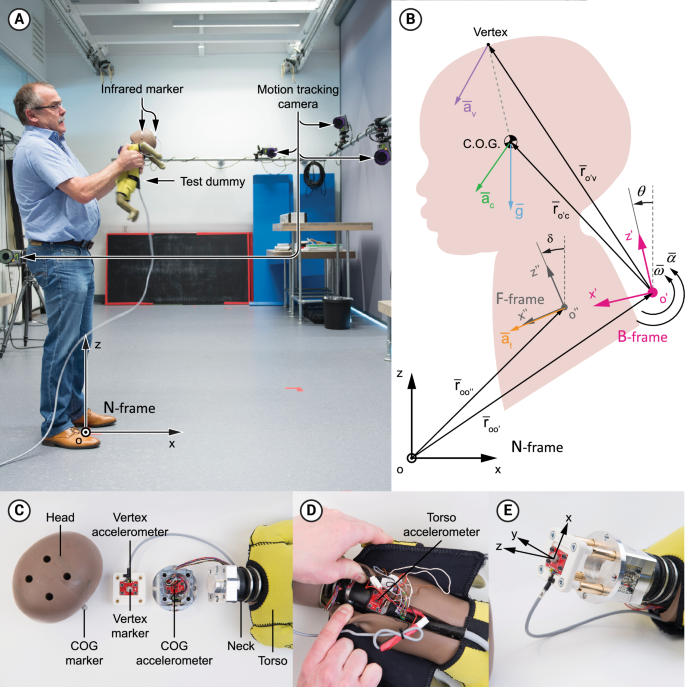2024-02-05 オランダ・デルフト工科大学(TUDelft)
<関連情報>
- https://www.tudelft.nl/en/2024/me/news/tu-delft-develops-model-to-better-understand-injuries-to-babies-caused-by-violent-shaking
- https://www.nature.com/articles/s41598-023-42373-x
乳幼児の揺さぶられによる頭部外傷:頭部回転中心の時空間変動の重要性 Inflicted head-injury by shaking-trauma in infants: the importance of spatiotemporal variations of the head’s rotation center
L. A. H. Schiks,J. Dankelman & A. J. Loeve
Scientific Reports Published:14 September 2023
DOI:https://doi.org/10.1038/s41598-023-42373-x

Abstract
Inflicted head injury by shaking trauma (IHI-ST) in infants is a type of abusive head trauma often simulated computationally to investigate causalities between violent shaking and injury. This is commonly done with the head’s rotation center kept fixed over time. However, due to the flexibility of the infant’s neck and the external shaking motion imposed by the perpetrator it is unlikely that the rotation center is static. Using a test-dummy, shaken by volunteers, we demonstrated experimentally that the location of the head’s rotation center moves considerably over time. We further showed that implementation of a spatiotemporal-varying rotation center in an improved kinematic model resulted in strongly improved replication of shaking compared to existing methods. Hence, we stress that the validity of current infant shaking injury risk assessments and the injury thresholds on which these assessments are based, both often used in court cases, should be re-evaluated.


